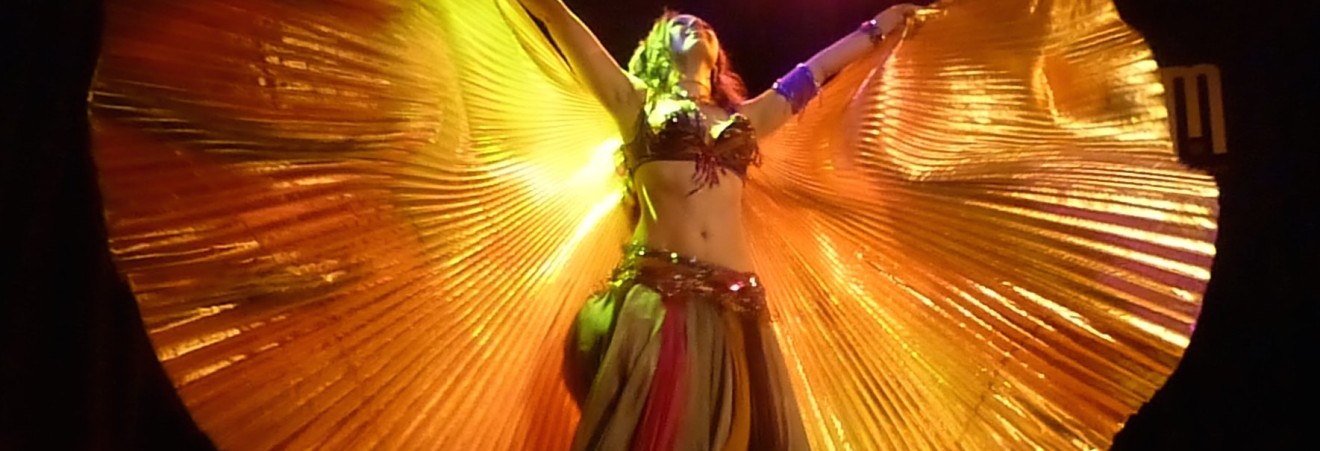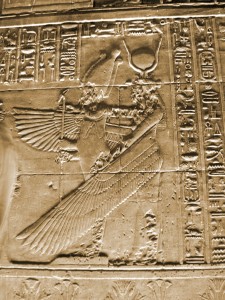THE ISIS RECLAMATION PROJECT
My name is Layla Isis.
I love my name, and I love being named after an ancient Egyptian Goddess that symbolizes life and rebirth. I didn’t have to change a thing when I decided to become a professional bellydancer: my parents could not have chosen a better name for me than Layla Isis. Until this past year, as an increasing number of awkward responses and negative associations to my name have begun to make things difficult.
At the first sign that the name Isis had penetrated the greater collective with twisted associations of death, destruction, and sorrow, I felt a knot of despair that grows day by day. Despite the fact that the proper acronym for the terrorist group is ISIL: The Islamic State of Iraq and the Levant, the vast majority of the media in the U.S. still use ISIS to describe this horrific organization.
I signed petitions protesting the media to stop using ISIS. In addition to my personal plight, this desecration of sacred symbolism is abhorrent and Isis’ true history must be brought to light. It’s not the first time it’s happened: the swastika, once an ancient symbol of life and well-being, was adopted by Hitler and forever tainted as a symbol of death and hatred. It’s important to understand that the language of ancient symbolism and myth are the very fabric of human consciousness, how we navigate our path to wholeness. The deplorable actions of the depraved few should not erase what beauty ancient history left us to preserve and identify with.
Before these current events, the name Isis was widely known and accepted as the most important and beloved Egyptian goddess in all of history. The Isis myth is so powerful that she has continued to remain a relevant religious and spiritual symbol of devotion to millions of people for more than 5,000 years, dating back to 3,000 BC. These jerkholes have been around for what – a year?
From the temples of ancient Egypt to the Roman Empire, Greco-Roman religions, and many modern pagan and interfaith religions, Isis has been worshipped as the Goddess of life, death, and rebirth. Her powers are associated with healing, fertility, and magic and she is revered as the ultimate feminine principle. The image of her as mother to the Sun-God Horus sitting in her lap so closely resembles the early Christian iconic art of Mary and Jesus, many historians surmise the latter is an assimilation of the former.
It is shocking to see such atrocities committed in her name. Perhaps then this is the age where Isis once again dons the face of the mourner, as her story also touches upon the grief and tears of human life. According to myth, the grieving Isis transforms herself into a bird to locate and reunite the scattered pieces of her beloved murdered husband Osiris. She is able to magically make Osiris whole again, and also magically conceive a child with him though the re-formed Osiris is neither living or dead, later becoming King of the Underworld and Isis his protector.
The Egyptian book of the dead describes Isis as “She who gives birth to heaven and earth, knows the orphan, knows the widow, seeks justice for the poor, and shelter for the weak.” Her virtually limitless powers, her courage, her compassion, her loyalty, and her unconditional love are what stand behind the name Isis since the ancient world.
So, regardless of your religious beliefs, it’s just ludicrous to associate the name Isis and all that her myth encompasses with the heinous ISIL. It needs to stop. I’m not changing my name. And if you come across the name Layla Isis, know that it stands for beautiful bellydancing goddess that brings joy and magic. Thank you.
Boundlessly,
Layla Isis



